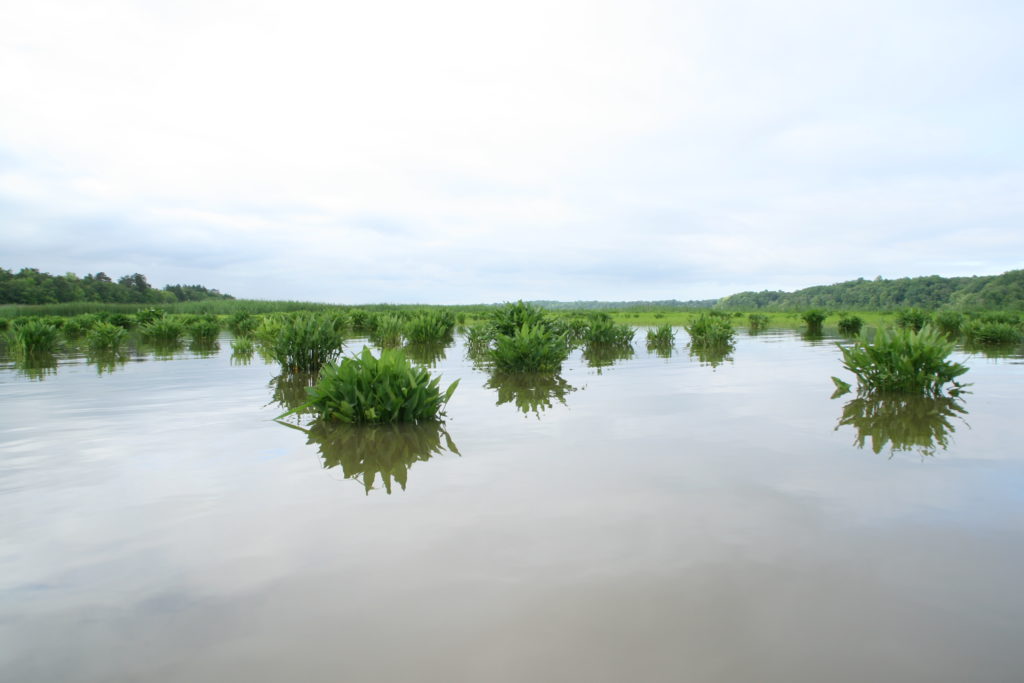Code Red: for the Chesapeake Bay

By: Gerald Winegrad, Fred Tutman, Kathy Phillips
Recent alarming news about the Chesapeake Bay signals a code red for immediate action. Efforts must be ramped up to greatly reduce agricultural and urban runoff pollution. These are the inconvenient truths compelling such action:
- The legal-sized Maryland bay oyster population declined by half since 1999. Oysters are below 1 percent of historic levels. This is despite the expenditure of more than $100 million. The oyster is a keystone species filtering and cleansing the bay’s waters. The bay states failed miserably to meet their pledge to increase oyster biomass by ten-fold by 2010. Overfishing occurred in more than half of the bay.
- The 2018 blue crab survey showed a 42 percent decline in mature female crabs, well below the goal. There was a 23 percent decline in the population of all adult crabs.
- The shad fishery is so depleted it was closed and, 25 years later, has not recovered. The soft clam fishery is depleted, both species of sturgeon are listed as endangered, and the eel fishery is in trouble.
- The large dead zone in the bay persisted last year and reached near-record size by late June. This oxygen depleted zone stretches for hundreds of square miles.
- Flesh-eating diseases threatening life and limb have become more prevalent in the bay because of excess nutrients fueling growth of toxic organisms. Bacterial infections are common, especially after rainfall when health departments warn people to avoid water contact.
- The states — including Maryland — have failed again in meeting their legally binding nitrogen caps. Only one-half of the required 60 percent reduction was achieved in 2017. Nitrogen is the key nutrient causing bay water quality problems.
- While some celebrated an increase in bay grasses in 2017 to 104,843 acres, the highest since surveys began in 1984, this was just a 5 percent increase from 2016 which represents only 57 percent of the goal of 185,000 acres we were supposed to have met by 2010. Bay grasses once covered at least 220,000 acres.
- Despite 35 years of efforts under the formal Bay Program, 58 percent of the bay’s waters do not meet minimum EPA Clean Water Act standards.
- There is a grave concern that even though reductions for phosphorus and sediment were met for the bay, the pollution reductions mandated by 2025 (after two decades of failed voluntary efforts) will not be achieved, and there is wide acknowledgment that nitrogen reductions will not be met.
This code red scenario is exacerbated by the fact that the greatest nutrient reductions have come from costly upgrades to large wastewater treatment plants, most of which are complete. This easy target, therefore, has been exhausted. Further, the Trump administration has acted to defund the Bay Program, cripple enforcement and repeal key restrictions on nitrogen emissions from coal burning and motor vehicles fuel economy standards.
The EPA failure to take any actions to enforce the pollution diet against laggard states also impedes progress. The increase in large chicken farms, more nitrogen-intensive corn and soybean farming, and more development of forests with increased stormwater runoff all add to the problem.
In December 1983, 35 years ago, the bay states and EPA solemnly pledged to restore the bay in signing the first Bay Agreement. President Ronald Reagan budgeted $40 million for the new Bay Program over four years and said in his 1984 State of the Union that: “We will begin the long, necessary effort to clean up a productive recreational area and a special national resource — the Chesapeake Bay.”
These lofty expectations may be crushed unless:
- The EPA takes actions against laggard states, compelling them to meet pollution limits;
- Maryland and other states better regulate farm pollutants, particularly animal manure, which should be regulated the same as cleansed biosolids from advanced human wastewater treatment plants;
- Funding and tighter discharge permits are implemented to reduce pollutants from existing urban stormwater runoff;
- Stormwater laws are adopted prohibiting any increase in rate, volume or pollutant loads from new development;
- Existing forests are protected and buffers increased;
- And wild oyster harvests are phased out with a shift to aquaculture, and crab harvests are reduced, especially of females.
The future of the Chesapeake Bay is at stake — now more than ever.
Gerald Winegrad (gwwabc@comcast.net) chaired the Senate Environment and Chesapeake Bay Subcommittee and taught graduate courses in bay restoration. Fred Tutman (fred@paxriverkeeper.org) is a former journalist covering the White House, an adjunct professor who’s taught courses on the bay and the Patuxent Riverkeeper. Kathy Phillips (coastkeeper@actforbays.org) is the Assateague Coastkeeper and executive director of the Assateague Coastal Trust.
